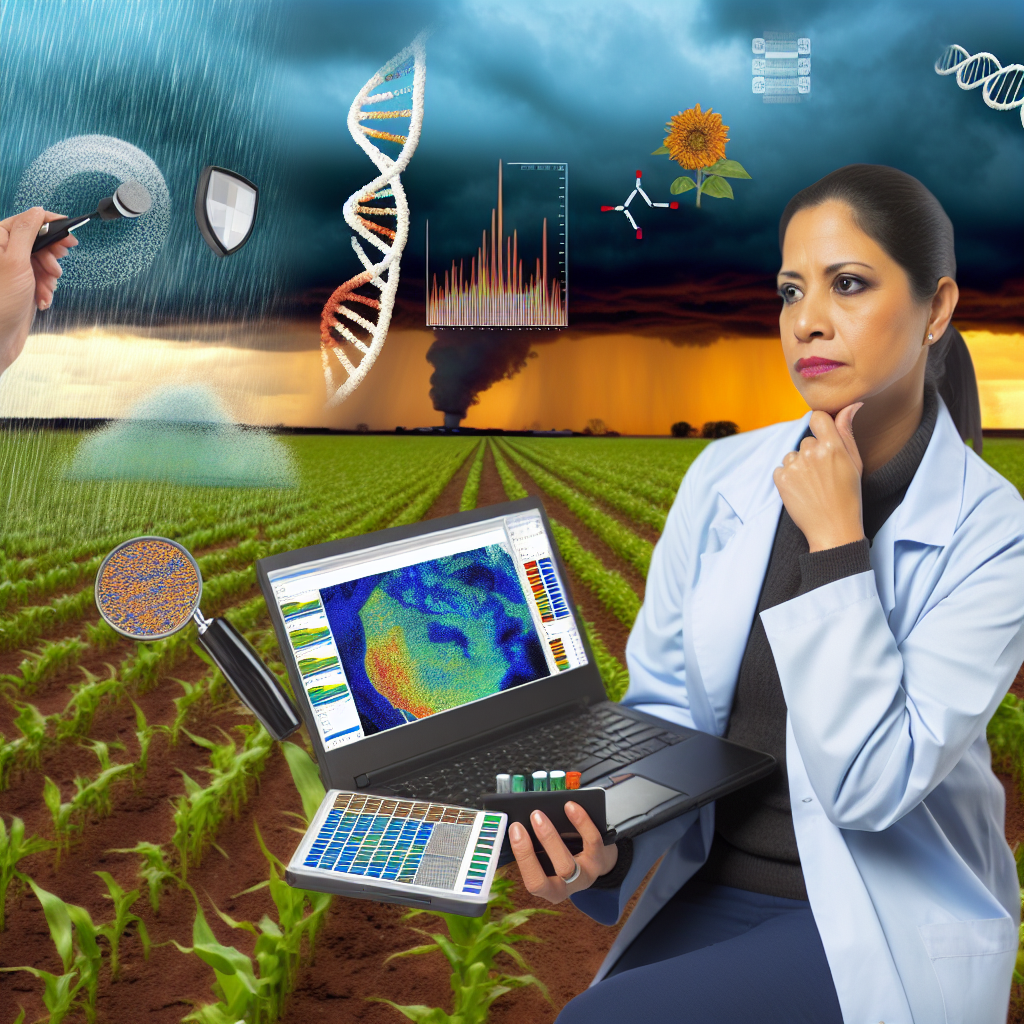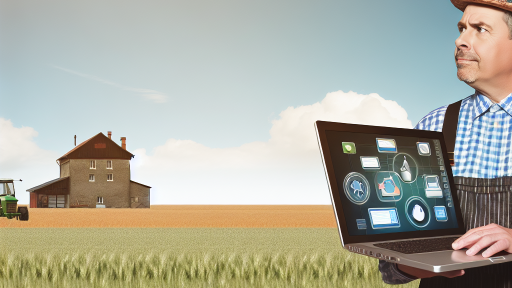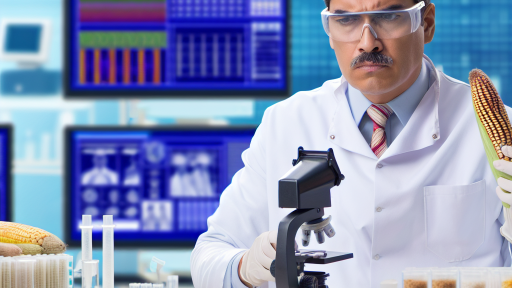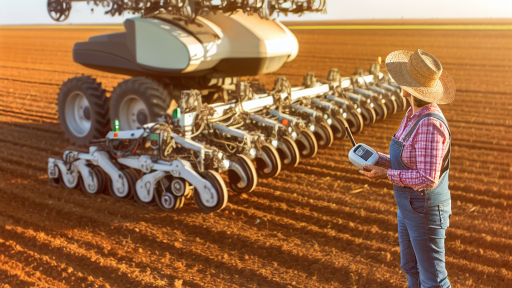Introduction to Climate Change and its Impact on Agriculture
Climate change presents a significant threat to global agriculture.
Rising temperatures affect crop yields and food security.
Changes in precipitation patterns complicate farming practices.
Increased frequency of extreme weather events disrupts agricultural systems.
Farmers face the challenge of adapting to these rapid environmental changes.
Understanding Climate Change
Climate change refers to long-term alterations in temperature and weather patterns.
These changes are largely driven by human activities, particularly fossil fuel emissions.
Greenhouse gases trap heat in the atmosphere, leading to global warming.
This atmospheric change drastically affects natural ecosystems and agriculture.
Impact on Crop Production
Species diversity is declining due to habitat changes and expanding climates.
Some crops may thrive, while others struggle to survive in new conditions.
Heat stress can reduce yields of temperature-sensitive crops.
Additionally, increased pests and diseases threaten agricultural output.
Farmers must find ways to mitigate these impacts to sustain production.
Consequences for Food Security
Food security is jeopardized as crop losses increase.
Transform Your Agribusiness
Unlock your farm's potential with expert advice tailored to your needs. Get actionable steps that drive real results.
Get StartedRegions that rely heavily on agriculture are most vulnerable.
Rising prices further strain low-income families and communities.
To combat this, innovative farming solutions are increasingly necessary.
Overview of Agricultural Biotechnology and Its Potential
Defining Agricultural Biotechnology
Agricultural biotechnology uses scientific tools to enhance plants and animals.
This field includes genetic engineering, molecular markers, and tissue culture.
It aims to improve agricultural practices and outputs sustainably.
Addressing Food Security
Agricultural biotechnology plays a critical role in food security.
It boosts crop yields and resilience to harsh environmental conditions.
This technology allows farmers to produce more with fewer resources.
Thus, it meets the growing global demand for food.
Mitigating Climate Change
This innovative approach helps mitigate the impacts of climate change.
Scientists can develop crops that resist drought and extreme temperatures.
Furthermore, biotechnology can reduce the need for chemical fertilizers.
Ultimately, it contributes to lower greenhouse gas emissions.
Enhancing Nutritional Value
Biotechnology can enhance the nutritional content of food crops.
Crops can be fortified with essential vitamins and minerals this way.
This is crucial in combating malnutrition globally.
Moreover, improved nutritional quality can increase public health outcomes.
Increasing Sustainability
Agricultural biotechnology promotes sustainable farming practices.
It allows for the development of disease-resistant crop varieties.
Such varieties reduce reliance on harmful pesticides and herbicides.
Consequently, biodiversity and ecosystem health can improve.
Challenges and Future Prospects
Despite its benefits, agricultural biotechnology faces challenges.
Public perception and regulatory hurdles remain significant obstacles.
Showcase Your Farming Business
Publish your professional farming services profile on our blog for a one-time fee of $200 and reach a dedicated audience of farmers and agribusiness owners.
Publish Your ProfileHowever, ongoing research and education are addressing these issues.
Looking ahead, biotechnology will likely play a larger role in agriculture.
Key Biotechnological Innovations for Climate Resilience
Improved Crop Varieties
Biotechnology enables the development of drought-resistant crop varieties.
These varieties thrive in low-water conditions, contributing to food security.
By utilizing genetic modification, scientists enhance yield potential significantly.
This process helps farmers cope with extreme weather events.
Efficient Resource Use
Biotechnology promotes more efficient use of fertilizers and water.
Crops designed to require fewer resources reduce environmental impacts.
Moreover, farmers experience lower production costs and increased sustainability.
Pest and Disease Resistance
Genetically engineered crops can resist pests and diseases without chemical pesticides.
This innovation leads to healthier ecosystems and biodiversity preservation.
Furthermore, it protects farmer livelihoods from crop losses.
Carbon Sequestration Enhancements
Certain biotechnological advancements enhance the ability of crops to sequester carbon.
This process mitigates greenhouse gas emissions effectively.
Additionally, sustainable practices improve soil health and fertility.
Agroecological Methods
Biotechnology supports the integration of agroecological methods into farming systems.
These methods emphasize biodiversity, which enhances ecosystem resilience.
By combining traditional farming practices with new technologies, farmers achieve greater climate resilience.
See Related Content: Smart Farming: Leveraging IoT for Sustainable Agriculture
Case Studies: Successful Implementations of Biotechnology in Agriculture
Increased Crop Yields in Africa
Africa faces significant food security challenges.
Biotechnology has proven effective in addressing these issues.
For example, the introduction of genetically modified (GM) seeds in Malawi boosted maize production.
Farmers reported yield increases of up to 50% after using these seeds.
This success demonstrates biotechnology’s potential to enhance food production.
Pest Resistance in Cotton Cultivation
Cotton farmers in India adopted genetically modified cotton known as Bt cotton.
This variety resists destructive pests, significantly reducing pesticide usage.
As a result, farmers experienced higher profits and lower crop losses.
These benefits illustrate biotechnology’s role in sustainable pest management.
Enhanced Nutritional Value of Crops
Biotechnology can improve the nutritional quality of staple crops.
Golden rice serves as a prime example, enriched with vitamin A.
This rice addresses vitamin A deficiency prevalent in many developing countries.
Moreover, it highlights biotechnology’s contributions to public health.
Climate-Resilient Varieties
Climate change poses serious threats to agricultural productivity.
Biotech firms develop crops with traits for better drought resistance.
For instance, drought-tolerant maize is now available in various parts of Africa.
This innovation helps farmers adapt to changing climate conditions.
Case in Precision Agriculture
Modern technology enhances agricultural productivity through precision agriculture.
Companies are developing biotechnological tools for soil management.
These tools help farmers utilize resources efficiently and sustainably.
The combination of biotechnology and data analytics is transformative for agriculture.
Showcase Your Farming Business
Publish your professional farming services profile on our blog for a one-time fee of $200 and reach a dedicated audience of farmers and agribusiness owners.
Publish Your ProfileUncover the Details: How Blockchain Enhances Traceability In Agricultural Supply Chains
The Role of GMOs in Reducing Agricultural Greenhouse Gas Emissions
Introduction to GMOs and Climate Change
Genetically modified organisms (GMOs) play a significant role in agriculture today.
They can help mitigate climate change by reducing greenhouse gas emissions.
Furthermore, optimizing crop yields lowers the need for additional resources.
How GMOs Reduce Emissions
GMOs contribute to lower emissions in several key ways.
They enable more efficient use of nitrogen fertilizers.
Additionally, these crops require fewer pesticides.
This leads to a decrease in the carbon footprint associated with agriculture.
Efficient Nitrogen Use
Crops like nitrogen-efficient soybeans can significantly cut emissions.
These plants utilize nitrogen more effectively than traditional varieties.
As a result, farmers apply less synthetic fertilizer.
Lower Pesticide Requirements
GMOs often possess traits that protect them from pests.
This trait reduces the need for chemical applications.
Consequently, farmers enjoy lower emissions from pesticide production and application.
Soil Health and Carbon Sequestration
GMOs can also positively influence soil health.
Healthy soil supports carbon sequestration, storing CO2 underground.
This natural process helps mitigate climate change impacts.
Cover Crops and Crop Rotation
GMOs can integrate well into innovative agricultural practices.
Farmers often use cover crops to improve soil health.
Furthermore, rotating GMOs with traditional crops enhances biodiversity.
Adapting to Climate Variability
Climate change poses challenges for farmers worldwide.
GMOs offer traits that enhance resilience to weather extremes.
Drought-tolerant crops can thrive in water-scarce environments.
Improved Stress Tolerance
Genetic modifications can make crops more resilient.
They can endure extreme heat or cold, reducing crop loss.
This resilience helps maintain stable food supplies.
Implications of GMOs for Agricultural Sustainability
GMOs play a pivotal role in modern agriculture.
They help lower greenhouse gas emissions while improving yields.
These benefits are essential in combating climate change.
Uncover the Details: Controlled Environment Agriculture Trends Every Farmer Should Know

Regulatory Challenges and Public Perception of Agricultural Biotechnology
Understanding Regulatory Challenges
The regulation of agricultural biotechnology varies globally.
Different countries enforce distinct policies and guidelines.
This inconsistency complicates international trade.
Moreover, regulatory processes can be lengthy and costly.
For instance, the approval time for biotech crops often stretches for years.
Regulatory bodies like the FDA and the USDA work to ensure safety.
They assess environmental impacts and human health risks.
This meticulous scrutiny aims to build public trust but can hinder innovation.
Addressing Public Concerns
Public perception of agricultural biotechnology remains mixed.
Some people view biotech crops as essential for food security.
Showcase Your Farming Business
Publish your professional farming services profile on our blog for a one-time fee of $200 and reach a dedicated audience of farmers and agribusiness owners.
Publish Your ProfileConversely, others fear potential health risks and environmental harm.
Transparency in research and development is critical.
Engaging the public through outreach and education fosters understanding.
For example, universities and agricultural organizations play vital roles.
Balancing Safety and Innovation
Regulatory bodies must balance safety and innovation.
Strict regulations can delay beneficial advancements.
Conversely, lenient standards may compromise safety.
Stakeholders need to collaborate to establish effective frameworks.
Public input is essential in shaping these regulations.
An informed public can support beneficial technologies and practices.
Promoting Positive Public Perception
Effective communication strategies are key to promoting biotechnology.
Highlighting success stories can help shift public attitudes.
Social media campaigns can provide real-time information.
Additionally, partnerships with trusted organizations enhance credibility.
Educational programs can demystify biotechnology for consumers.
Ultimately, ongoing dialogue is crucial for acceptance.
Gain More Insights: Top Sensor Technologies for Sustainable Agriculture
Comparative Analysis: Traditional Farming vs. Biotechnological Approaches
Overview of Traditional Farming
Traditional farming relies on age-old practices to cultivate crops.
Farmers utilize natural methods for pest control and soil management.
This approach emphasizes crop rotation and intercropping.
Consequently, biodiversity is often maintained through these practices.
However, it may face challenges like climate variability.
Challenges in Traditional Farming
Traditional methods often struggle with yielding enough food.
Factors such as pests and diseases can significantly reduce crop output.
Additionally, climate change introduces unpredictable weather patterns.
These changes can lead to decreased soil fertility over time.
Consequently, traditional farming may not meet future food demands.
Introduction to Agricultural Biotechnology
Agricultural biotechnology offers innovative solutions to modern challenges.
This approach utilizes genetic engineering to enhance crop traits.
For example, BT corn is engineered for pest resistance.
This reduces the need for chemical pesticides significantly.
Moreover, biotechnology can improve drought resistance in crops.
Advantages of Biotechnological Approaches
Biotechnology significantly increases crop yields.
It allows crops to thrive in suboptimal conditions.
Farmers benefit from reduced pesticide use and lower costs.
Additionally, biotechnological crops require less water.
Consequently, these advancements could lead to more sustainable agriculture.
Comparative Effectiveness
The effectiveness of traditional and biotechnological methods varies.
While traditional farming maintains ecological balance, biotechnology offers efficiency.
This could help address global food security challenges.
Showcase Your Farming Business
Publish your professional farming services profile on our blog for a one-time fee of $200 and reach a dedicated audience of farmers and agribusiness owners.
Publish Your ProfileMoreover, biotechnological crops often result in higher profit margins.
In contrast, traditional methods support local ecosystems better.
Future Implications and Considerations
As climate change exacerbates agricultural challenges, innovative solutions are essential.
Biotechnology may play a critical role in enhancing resilience.
However, ethical and ecological considerations must be addressed.
Public perception also significantly impacts the adoption of biotechnological solutions.
Thus, a careful balance between traditional and modern approaches is crucial.
Future Directions: Integrating Biotechnology with Sustainable Farming Practices
Embracing Sustainable Agricultural Methods
Sustainable farming practices are vital for our planet’s future.
These methods reduce reliance on harmful chemicals.
They promote ecological balance and protect biodiversity.
Farmers can utilize techniques such as crop rotation.
This practice enhances soil health and reduces pest issues.
Biotechnology as a Complementary Tool
Biotechnology offers innovative solutions to agricultural challenges.
It includes genetically modified organisms that are drought-resistant.
Such varieties can significantly reduce water use in farming.
These technologies help farmers adapt to climate challenges.
Additionally, biotech crops can require fewer pesticides.
Collaboration Between Farmers and Biotechnologists
Collaboration leads to the development of effective solutions.
Farmers’ insights drive meaningful biotechnological innovations.
By sharing knowledge, both parties can tackle obstacles efficiently.
This partnership fosters agricultural resilience in changing climates.
Policy Support and Research Investments
Governments play a crucial role in promoting sustainable practices.
Investments in agricultural research lead to breakthroughs.
Funding initiatives can enhance the development of sustainable biotech.
Moreover, supportive policies can facilitate technology adoption.
Education and Community Engagement
Educating farmers on biotechnological advancements is essential.
Workshops can showcase the benefits of sustainable practices.
Community engagement fosters a culture of innovation.
This ensures widespread acceptance and implementation of new techniques.
Evaluating Impact and Adjusting Strategies
Continuous evaluation of agricultural practices is necessary.
Farmers should assess the effectiveness of biotech solutions.
This feedback informs further research and development efforts.
Adjusting strategies ensures ongoing improvement in sustainability.
Additional Resources
An assessment of the linkages between GM crop biotechnology and …
Seth Meyer, Ph.D. Chief Economist, Office of the Chief Economist …




